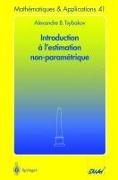- Start
- Planning and Coding of Problems for an Electronic Computing Instrument, Vol. 2 of 3
Planning and Coding of Problems for an Electronic Computing Instrument, Vol. 2 of 3
Angebote / Angebote:
Excerpt from Planning and Coding of Problems for an Electronic Computing Instrument, Vol. 2 of 3: Report on the Mathematical and Logical Aspects of an Electronic Computing Instrument
This report was prepared in accordance with the terms of Contract No. W-36-054-0Rd-748I between the Research and Development Service, U.S. Artry Ordnance Deparbment and the Institute for Advanced Study. It is essentially the second paper referred to in the Preface of the earlier report entitled, Preliminary Discussion of the Logical Design of an Electronic Computing Instrument, by A. W.Burks, H.H. Goldstine and John von Neunann, dated 28 June 1946. During the time which has intervened it has become clear that the issuance of a greater number of reports wi I I be desirable. In this sense the report, Preliminary Discussion of the Logical Design of an Electronic Computing Instrunent should be viewed as Part I of the sequence of our reports on the Electronic Computer. The present report is Volume I of Part II. A Volume II of Part II wi I I foltow within a few months. Part II is intended to giv an account of our methods of coding and of the pnilosophy which governs it. It contains what we believe to be an adequate number of typical examples, going from the simplest case up to several of high complexity, and in reasonable didactic completeness. On the other hand. Part II in its present form is preliminary In certain srgnili cant ways. On this account the folloving ought to be said. oil We do not discuss the orders control I ing the inputs and outputs and the stopping of the machine. (The inputs and outputs are, hovjever, discussed oi to the extent which is required for the treatment of the binary-decimal and decimal-binary conversions in Chapter Viii.) The reason for this is that in this direction some engineering alternatives seem worth keeping open, and it does not affect the major problems of coding relevantly. The use of the input-output medium as a subsidiary memory is not disQussed. This will probably be taken up in Part III. The code is not final in Qr jrespect. Several minor changes are clearly called for, and even some major qnes are conceivable, depending upon various engineering possibilities that are still open. In all cases where changes are indi Gated or possible, there are several alternative ones, between which it is not yet easy to choose with much assurance. We believe that our present code is correct in its basic idea, and at any rate a reasonable basis for the discussion of other proposiils. That is, the examples which we have coded, may serve as standards in ocomparing this code with variants or with more basically different systems.
About the Publisher
Forgotten Books publishes hundreds of thousands of rare and classic books. Find more at www.forgottenbooks.com
This book is a reproduction of an important historical work. Forgotten Books uses state-of-the-art technology to digitally reconstruct the work, preserving the original format whilst repairing imperfections present in the aged copy. In rare cases, an imperfection in the original, such as a blemish or missing page, may be replicated in our edition. We do, however, repair the vast majority of imperfections successfully, any imperfections that remain are intentionally left to preserve the state of such historical works.
Folgt in ca. 5 Arbeitstagen

